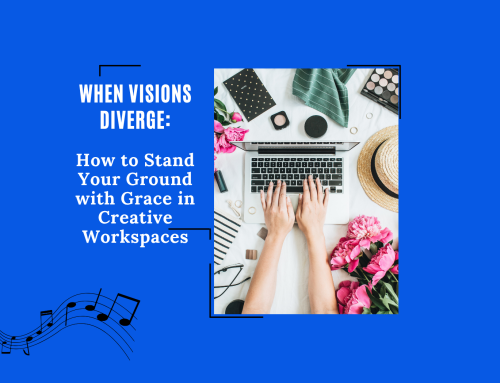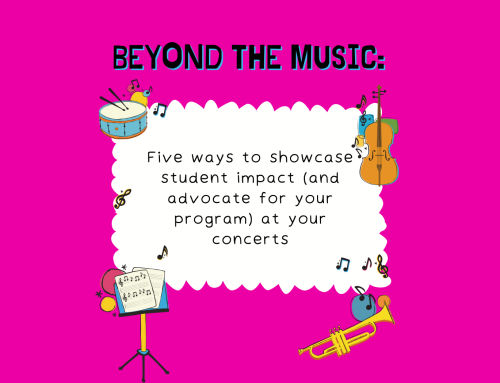I’ve never had a “traditional” view of my orchestra classroom. Perhaps this is due in part to the fact that I am a non-traditional orchestral director. While that may be a story for another time, it’s important to note that I have always strived to make my music classroom a music laboratory. Sometimes, this is successful. Other times, it isn’t.
(You can read more about my approach to orchestra in the book, The Learner-Centered Music Classroom: Models and Possibilities)
When our school shut down due to COVID-19, so many of our musical performance goals were shut down. There wouldn’t be an All-state conference in April for my select group to perform at. There wouldn’t be an in-person spring concert. Our original composition premieres would not happen. All of the traditions we had planned for our seniors would need to be re-envisioned. My students felt that sense of loss and I felt it with them.
In the space between denial and acceptance, I scrambled to find the way forward. How can we continue to engage in meaningful music-making? How can I provide a space for my students to share their work and honor the work that they have already put in?
How can we stay true to our philosophy and vision but reimagine the product?
At first, I did not have any plan of putting together a virtual orchestra. I had seen all of the heated posts about this on Facebook forums for music educators. Should we be trying to replicate an in-person experience? Or, should we be doing something completely different? And, how can we justify all of the time and effort it takes to put something like this together?
After debating back and forth for days on what the remaining 8 weeks should look like, I did something I should have done from day one.
I asked the students—What do YOU want to do?
Co-creating a path forward
Their answers were surprising in some ways.
“Do you want to keep composing remotely?”
“YES!”
I was especially surprised by this answer. My ensemble this year was largely comprised of Freshman who were new to our building and new to my classroom. When we launched an individual composition project the week before school shut down (students were required to compose a 32 measure piece for string orchestra), I thought it would be entirely overwhelming for students to continue this at home. I was wrong. Being creative in this way and hearing/seeing the fruits of their labor was something they enjoyed. We decided to forge ahead.
“Do you want to create a virtual ensemble?”
“YES.”
“Do you want a spring concert?”
“YES.”
The students spoke and I listened. They picked one piece that they liked best (Lullaby to the Moon by Brian Balmages) and we got to work. Students practiced via a free SmartMusic license (many of them did not have the music at home) and I created a conducting track for them to record their part. Last Friday, as the submissions poured in, I was surprised by my intense emotional response.
As I pieced together all of the individual tracks—listening, syncing, adjusting, combining—I felt a sense of deep gratitude and awe. These students have never heard the sound of all of their instruments performing this beautiful piece of music together. We had not yet had a full rehearsal for the spring repertoire. The first time they would hear the sound of their instrumental voices together would be at our virtual concert. Even typing this gives me chills. As I reflect on this process today, I am struck at how the virtual ensemble experience can mold our approach to our physical ensembles when we one day return to our classrooms.
Virtual solutions for real problems
One of the main criticisms of the large ensemble domination in music education within the United States is the lack of individualization presented to students.
In the book, A Different Paradigm in music education: Re-examining the profession, David Williams describes this challenge:
“Is it possible we are more concerned with group outcomes than we are about the individuals that make up the group? It appears that large performing groups are too often not about the individual learning, but instead, more about the sum of the parts (students). For example, concerts, festivals, and contests, the most often celebrated goals of ensembles, usually serve as benchmarks for how well parts function as a group, and not as a measure of individual accomplishment.”
Williams goes on to compare this mindset to other educational settings. His main point is that with large class sizes and educational goals that don’t rest on each member achieving proficiency, many fall through the cracks.
So, how is a virtual ensemble different?
First, students HAVE to have a measure of autonomy over their ability to perform a piece. They have to. They are unable to rely on the section around them or to watch the bowings of the person in front of them. When we decided to perform virtually, I immediately noticed that some of my struggling students took much more ownership over their playing. They were emailing me for help, scheduling meetings, and putting in hours of practice. I was amazed. (Note: not every student responded in this way)
Second, there is no first chair.
There is no first chair! Sure, we can edit our virtual pieces to make some videos larger and some students louder than others. We can find ways to visually bring sections to the forefront or highlight soloists. But, the #1 benefit of my students playing in this virtual ensemble is that they can all be seen and they can all be heard. There is no “student hiding in the back and faking it.” They’re all playing. And, they’re all playing with better posture than they play with at our “live” concerts. (There’s nothing like putting a camera on you to reveal posture shortcomings!)
30% of my students opted to send in audio-only tracks, the rest providing videos. As I cropped and dragged each of 30 tiny videos to make a beautiful mosaic of students, I couldn’t keep from tearing up. Seeing all of them, together, in this virtual space, and hearing the sum of the parts, I was convinced of the musical power and presence that can be felt when many join to create something that is uniquely collaborative.
What does this mean?
I want to carry these lessons with me back to the physical classroom. I’m not left so much with answers, but with more questions.
- How can I better individualize my instruction so that no one in my ensemble is left behind?
- How can I showcase each and every student so that no one is left in the back?
- How concerned am I about the quality of sound within my ensemble versus the quality of connection I establish with each and every student?
- What should our musical product goals be each year?
- How can the structure of my physical classroom and the structure of our ensemble during performances honor each and every contributing voice?
- And, how can I remember why we do this when days are long and concert season feels hard and exhausting?
This time, instead of thinking I need to be the one to have the answers, I’ll go directly to the ones that matter most: the students.




Leave A Comment